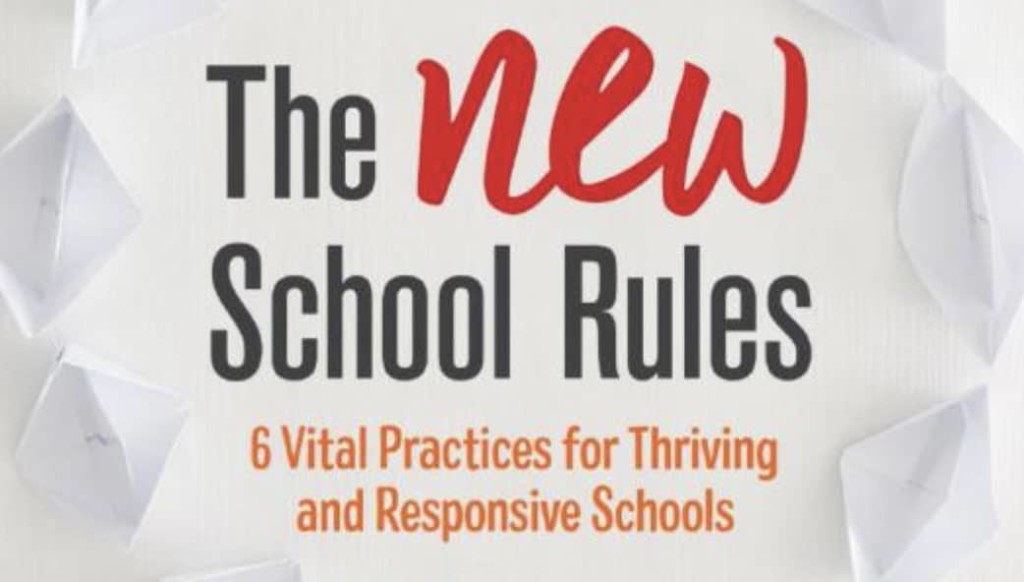New School Rules: A Changemaker’s Guide to Innovation

In high functioning schools and systems, leaders play four important roles: governance, operations, community building and change leadership. As El Paso superintendent Juan Cabrera and I discussed in a recent post, each of these roles can feel like a full-time job.
Just maintaining the status quo (governance and operations) are complex and politically charged roles. Mobilizing collective community action to better supports youth and families can be an enormous lift–and school leaders almost always have a role in making it happen.
But it’s the changemaker role where there is a big opportunity for contribution. Building an improvement and innovation agenda is complex work. It combines technical solutions (proven methods applied to known situations) and adaptive solutions (designed approaches often including new tools). This is the stuff they didn’t teach you in graduate school (at least not most of them) but it’s where you can really make a difference for your community.
That’s why we were so excited for the release of The New School Rules by Anthony Kim, CEO of Education Elements. For school system heads, it’s the best changemaker’s guide out there.
Superintendent Cabrera and I have written about creating a Competitive, Coherent, Creative School District. The keys are responsiveness and agility–responding thoughtfully to a complex world and mobilizing a change agenda in what have been historically hierarchical organizations.
I’ve visited more than 2,000 good schools and they are all highly responsive. Schools that are working, said Kim, “always create early on environments designed for evolution, responsiveness and continuous learning.”
Kim’s book is the how-to. It’s “an introduction to responsive, agile, and engaging organizational principles and practices applied to the world of education– and the world our students will be living and working in.”
I LOVE the organization of this book. Every chapter includes a problem statement, a new rule, a case study, lessons and suggested experiments. It’s super useful as a straight read or for bite-size tips midstream.
New Rules
I like the title of this book because it reminds me of the irreverent segment on Bill Maher’s show.
You’ll want to make the table of contents a wall hanging–it’s six great lessons in school change:
- Planning: Plan for Change, Not Perfection
- Teaming: Build Trust and Allow Authority to Spread
- Managing Roles: Define the Work Before You Define the People
- Decision-making: Aim for “Safe Enough to Try” Over “Consensus”
- Sharing Information: Harness the Flow and Let Information Go
- The Learning Organization: Schools Grow When People Grow
The book launched with a cool dedicated website with a sample chapter and 10 activities that aren’t in the book.
My list of 100 high schools worth visiting includes different pedagogical approaches, so that’s not the secret sauce. As Kim notes, it’s really the culture, structures, of our schools, and methods of communication and decision-making that are the actual drivers for success or failure.
Kim and co-author (and organizational guru) Alexis Gonzales-Black claim that responsive organizations embrace an iterative and evolving approach to planning and structure, meaningful autonomy for teams and team members, and approaches to gathering and sharing and information that build trust and supports effective decision-making.
They recommend a five-step process to initiate and sustain the improvement process:
- Purpose: clarify and align teams and organization around a clear and compelling purpose (One hour initial definition).
- Protocols: Become fluent in agreed-upon guidelines and standards (2-4 months with weekly practice).
- Data: Solicit and share information effectively (daily or weekly practice).
- Mindsets and habits: Deepen commitment and solidify a responsive culture (daily or weekly practice).
- Systems Practices: Revisit, question, and revise (4 hour quarter review).
On Networks
Kim notes that responsive organizations, “learn and respond rapidly through the open flow of information; encouraging experimentation and learning on rapid cycles,” and are organized as a network of employees, customers and partners motivated by shared purpose.
In addition to a school or small district operating more like a network than a hierarchy, we think networks can play an even larger role than introduced by New School Rules.
Mobilizing to personalize learning remains a difficult design and implementation challenge. Few schools have the capacity to figure it all out on their own. We think they should work together in a network of like-minded schools that share learning models tools, and professional learning experiences.
The 200 schools that belong to the New Tech Network are an example of a voluntary association of a group of schools (90% in school districts) that share a point of view on learning, a platform and professional development opportunities.
Partner schools of Education Elements are another form of a network sharing practices and tools.
Some networks are formal structures–school districts and charter management organizations–but they attempt to move from hierarchical to generative systems that learn bottom up and outside in as much as top down.
We think this idea of working together in networks is so important we just finished a book on the topic (Wiley, 6/18).
Anthony has identified six important new school rules. We might add a seventh: Networks help: schools benefit by working together to personalize learning.
For more, see:
- Lean School District: 12 Service Delivery Opportunities
- Competitive, Coherent, Creative: The 21st Century School District
- How School Networks Work And Why That’s Important
Stay in-the-know with all things EdTech and innovations in learning by signing up to receive the weekly Smart Update. This post includes mentions of a Getting Smart partner. For a full list of partners, affiliate organizations and all other disclosures, please see our Partner page.







0 Comments
Leave a Comment
Your email address will not be published. All fields are required.